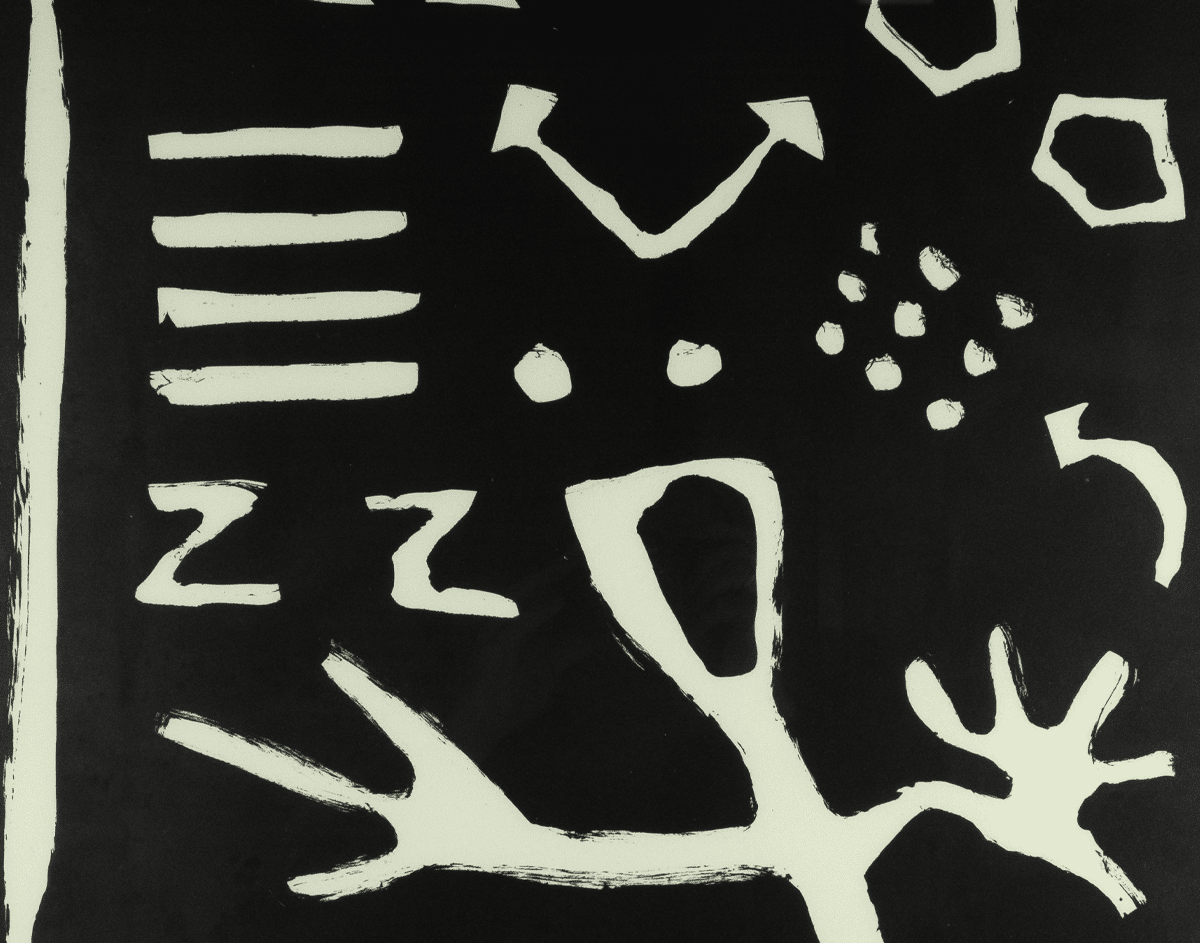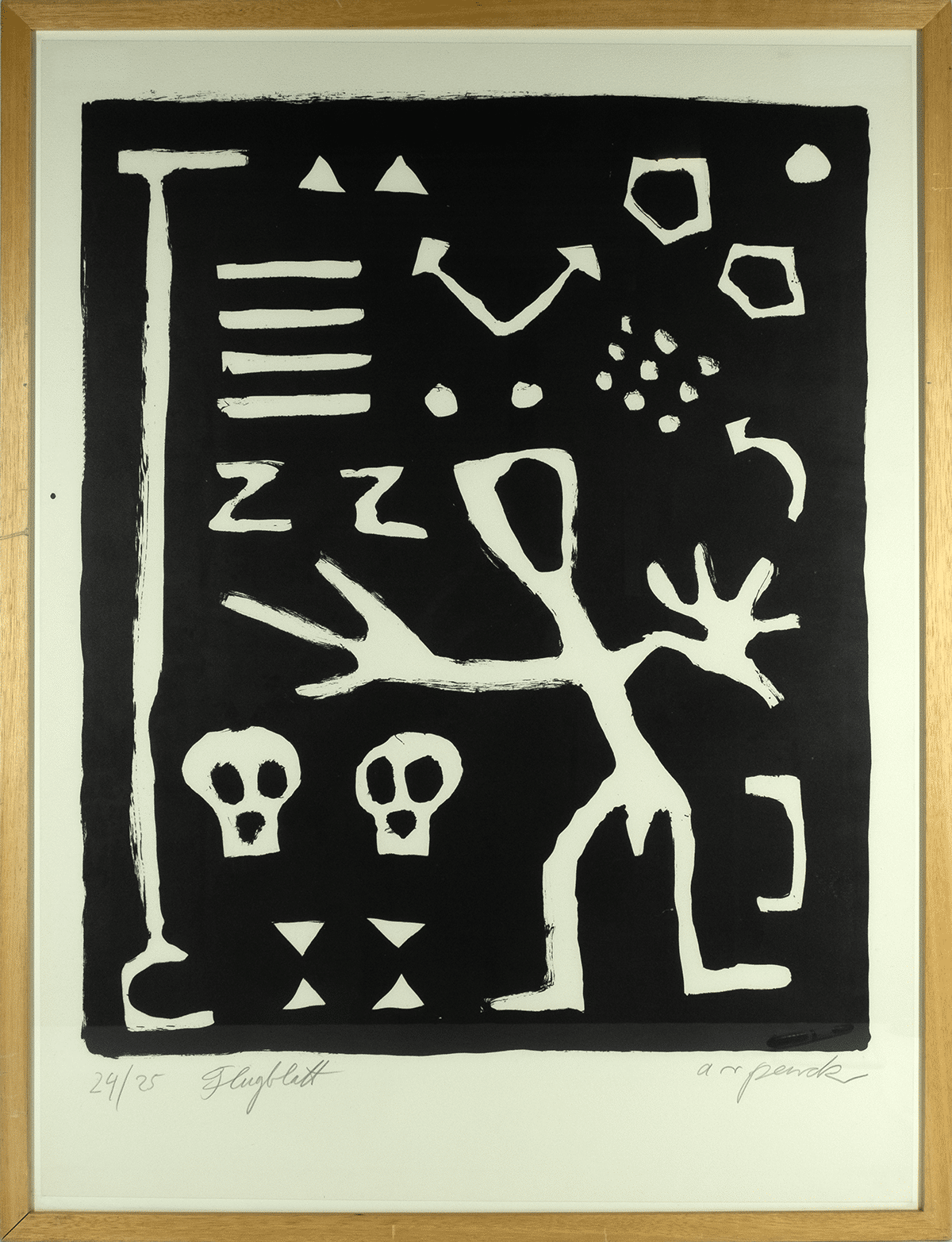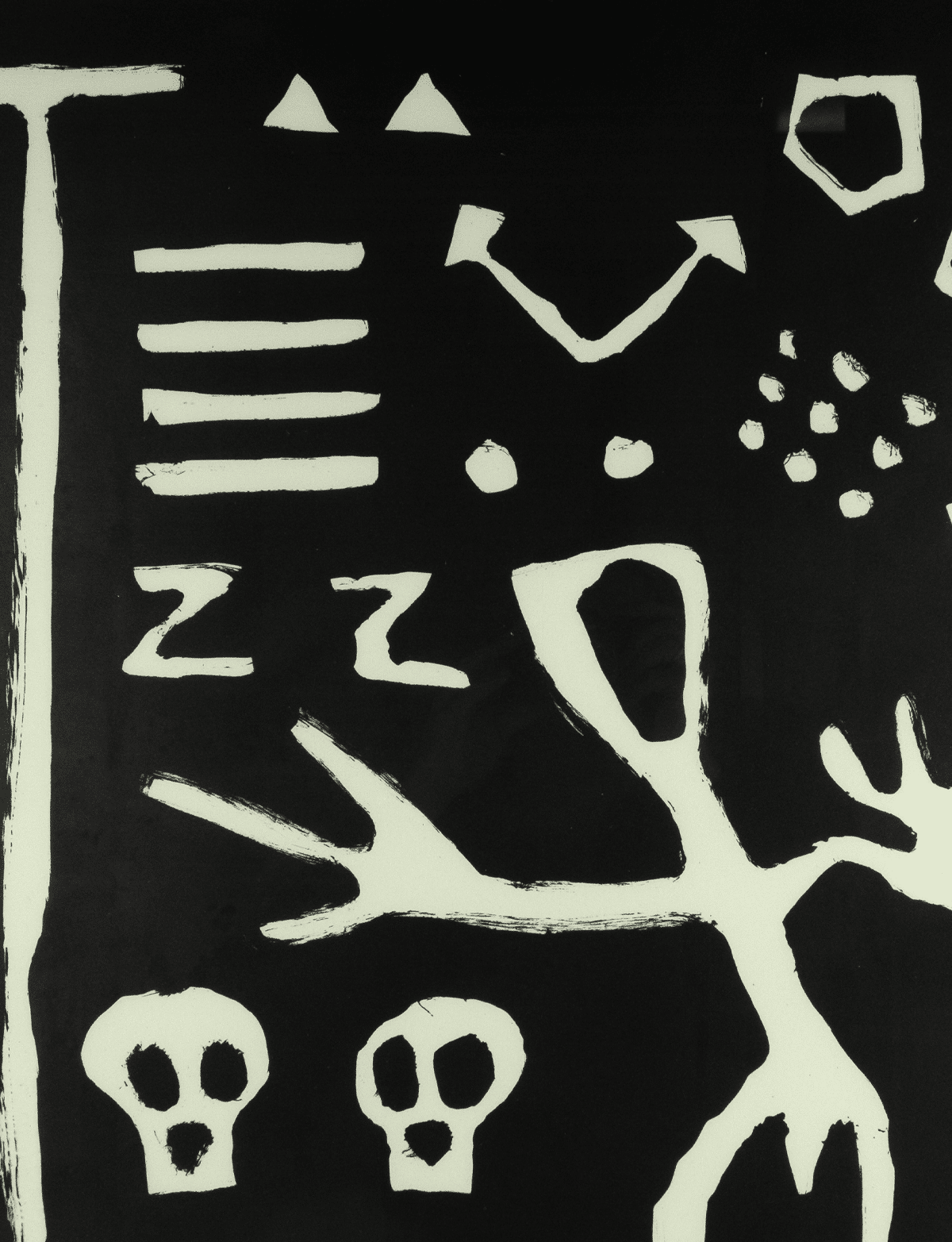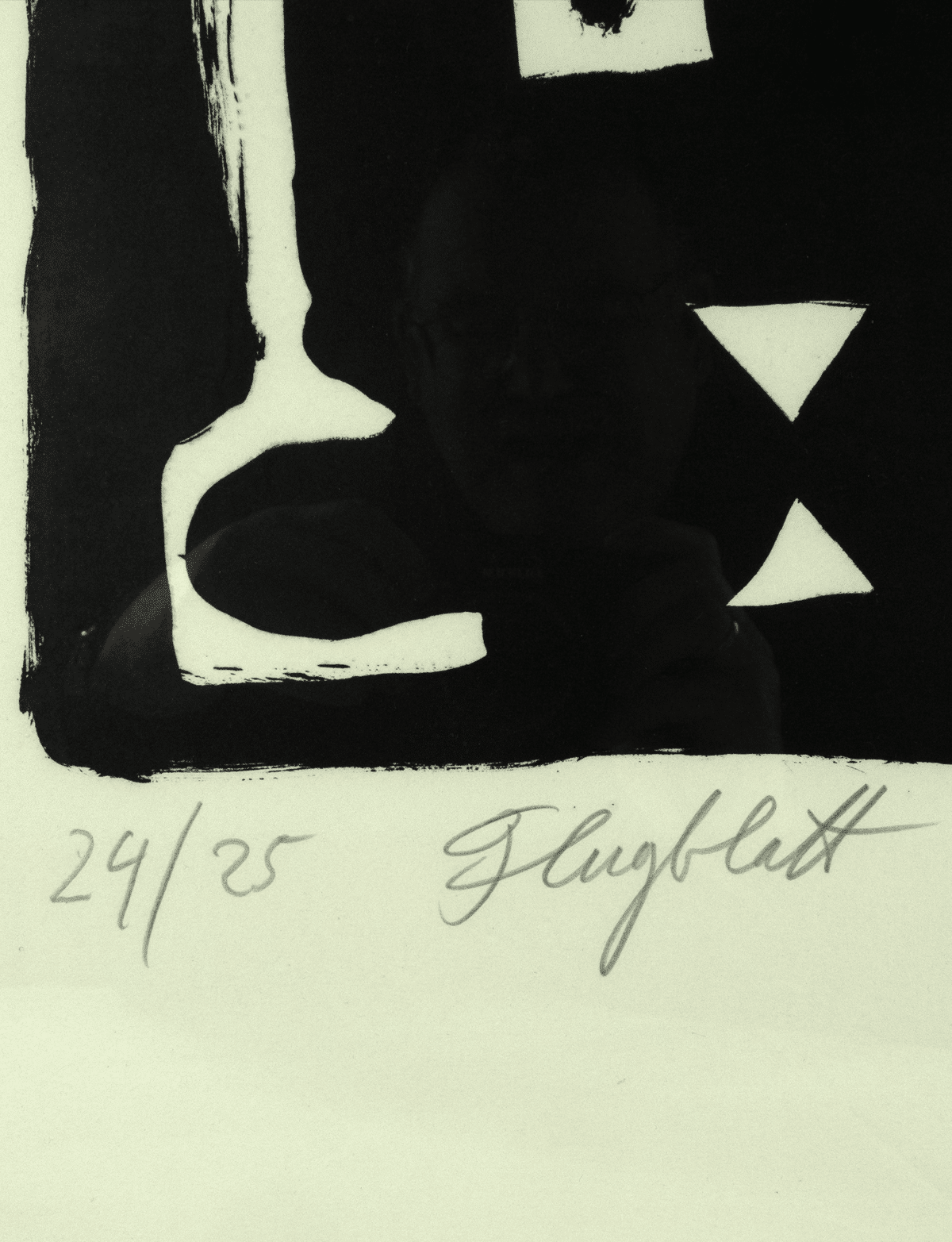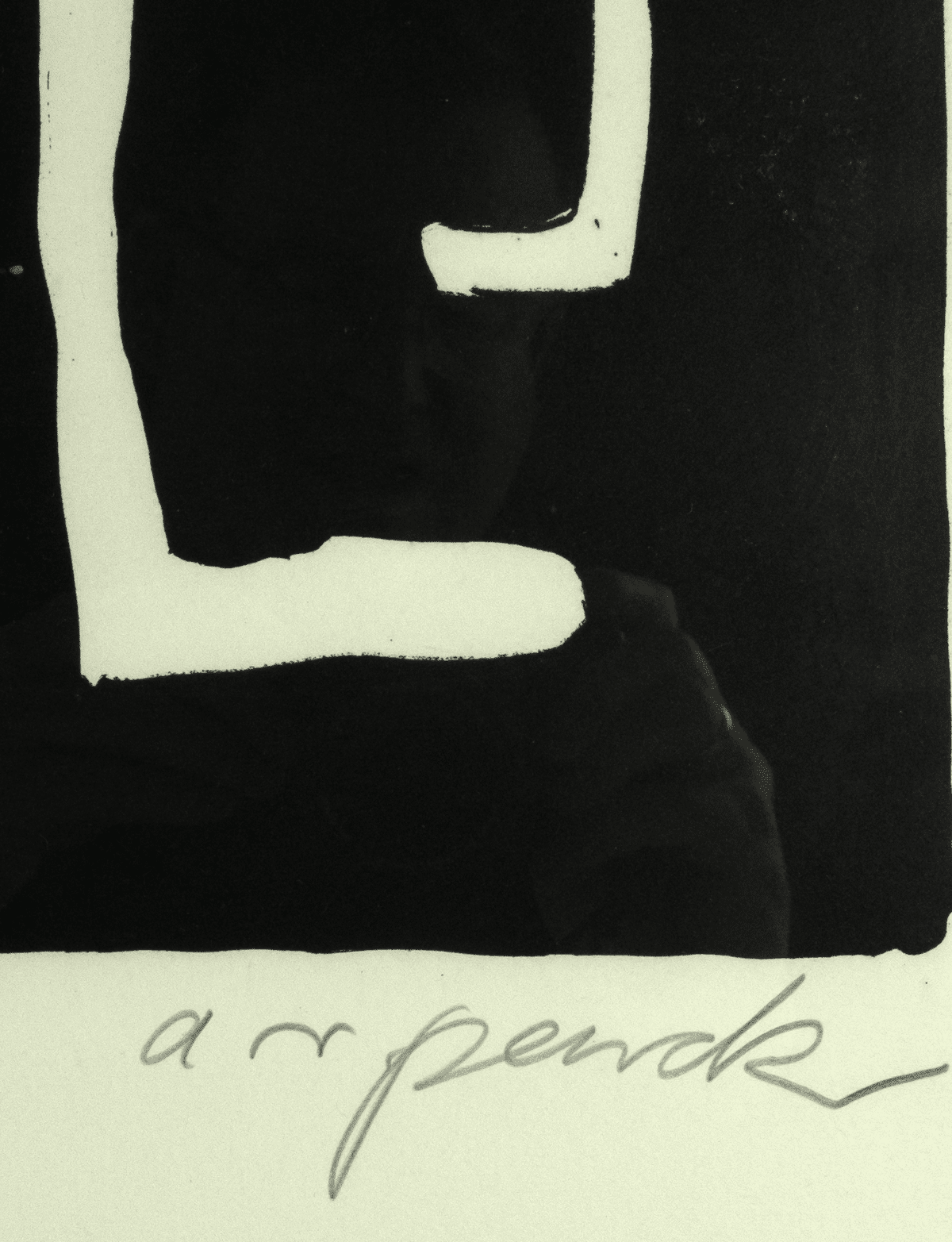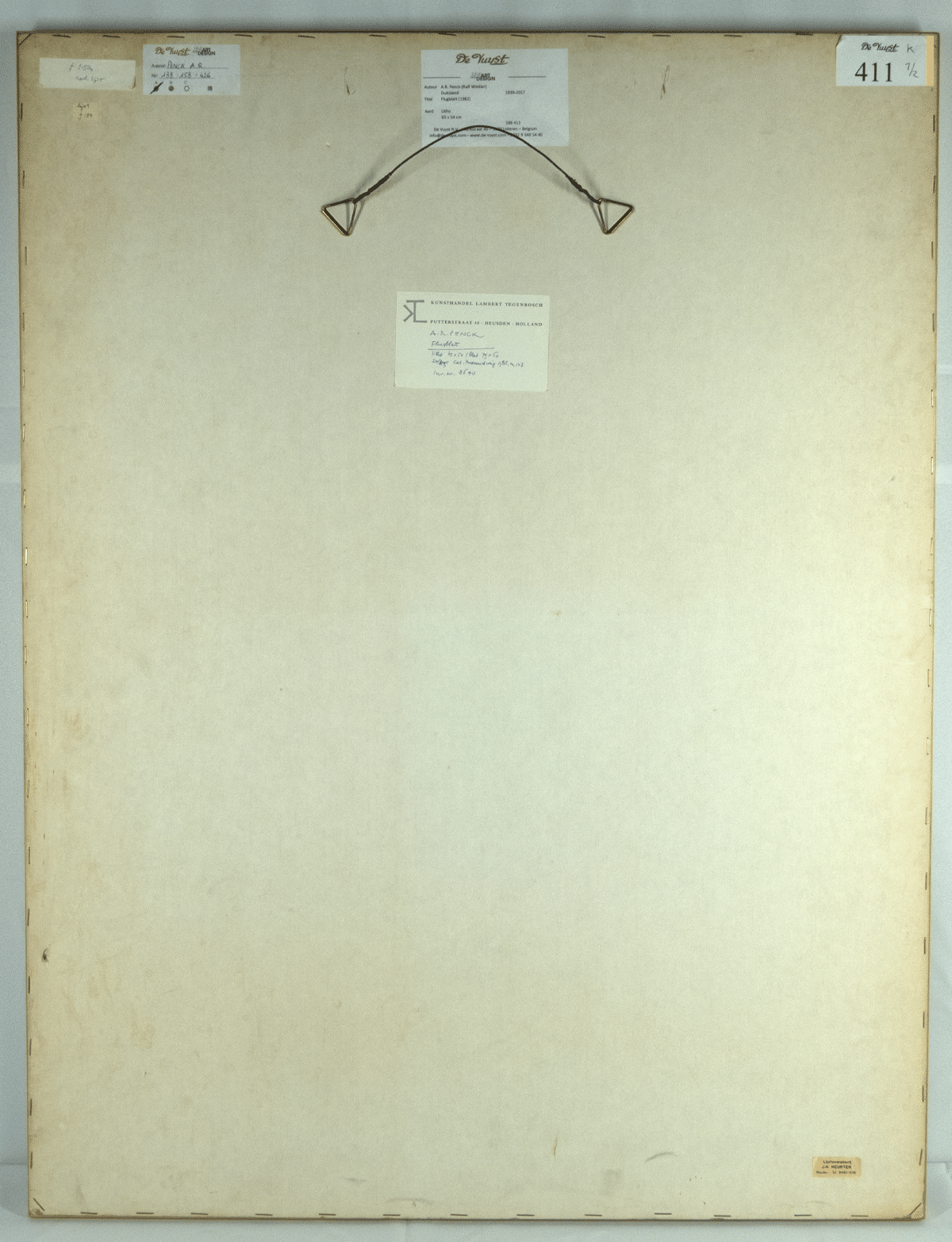Lithography. 1982. 24/25, signed r.o. Dimensions image ca 54*65 cm, frame ca 65*85 cm.
Provenance: Kunsthandel Lambert Tegenbosch.
Back to offer overview
Biography
A. R. Penck (1939-2017)
The Dresden-born artist A. R. Penck (pseudonym of Ralf Winkler) participated in a drawing course taught by Jürgen Böttcher in 1953 as a fourteen-year-old. Together with his teacher and several other artists, he founded the artist group Erste Phalanx Nedserd. Nedserd = Dresden, Phalanx refers to the artist group Phalanx founded in Munich in 1901 by Kandinsky and others. Its members opposed old-fashioned and conservative views in academic art and the Sezession.) on. Böttcher became a mentor and even outside the course the artists met in Böttcher’s apartment to listen to jazz and discuss art. One had to meet privately because, starting in the 1950s, every new artist group in the GDR had to undergo an application process. Available information on art was limited and the art allowed and desired by the state was socialist realism. Among the artists discussed within the group was Pablo Picasso, a painter who again served as an inspiration to many postwar modern artists. Because members of the Nedserd group wanted to produce artistic work without compromise and not conform, they were not admitted to art school. Nor were they admitted to the artists’ association in the GDR (VBK); a prerequisite for working as artists. From 1955 to 1956, Penck did serve as an apprentice artist at DEWAG; the GDR’s advertising agency.
In 1966, he reported to the UBC as A. R. Penck. He chose the pseudonym after the geologist Albrecht Penck (1859-1945) who brought physical geography to great prominence in Germany and was known as an ice age researcher. Ralf Winkler claimed to be an image researcher (Albrecht Penck published the map of the “deutscher Volks- und Kulturboden” in 1925, incidentally within the framework of the so-called Volks- und Kulturbodenforschung). In 1969, Penck was denied admission to the UBC. He was also increasingly boycotted in the GDR.
In May 1971, Penck founded the group Lücke with other artists; a reference to the name of the Brücke, intended as a reference to the deficiencies (Lücken, holes) in art in the GDR. From 1973 he worked under the pseudonyms Mike Hammer and T.M. (also called TM). In 1976, Penck met fellow West German painter Jörg Immendorff, with whom he worked in the following years. In their works, they campaigned for the abolition of the border between the two Germanies; they also expressed support for East German dissidents.
In 1980, Penck was expelled and moved to Cologne. In the 1980s, he was counted among the “Neuen Wilden”; a group of visual artists who created works in Germany and Austria in a carefree and sprightly style. They created expressively abstract, sensuously figurative paintings, interspersed with large-format graffiti elements with sweeping and powerful brushstrokes, bold colors and colorfulness.
Penck made paintings with standardized figures starting in the early 1960s; “Systembilder” with stylized images of people (stick figures) and graphic symbols reminiscent of cave paintings and graffiti. A style that uses simple, archaic pictorial symbols that is both expressive and conceptual and that enables any viewer to
sets to make sense of the images (like those on government bulletin boards).

